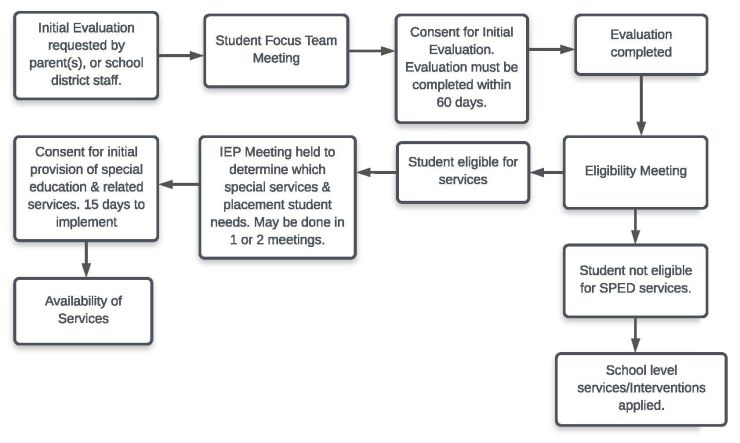
A child interprets expressions on paper. (Courtesy photo)
Jeanne Sablan
Family Advocacy Program
Army Community Service
Directorate of Family and Morale, Welfare and Recreation
U.S. Army Garrison Hawaii
SCHOFIELD BARRACKS, Hawaii -- Mrs. Smyth’s 3rd grader, Dylan, frequently comes home from school in tears.
He’s struggling to keep up. He says he’s bored, hates school and never wants to go back.
She speaks with his teachers, and they tell her he doesn’t pay attention in class, is missing assignments and sometimes gets in arguments with his classmates. She’s wondering if this is a behavioral problem, an educational problem, or both.
The next day, Mrs. Smyth goes into the school and asks to speak to someone about having her son evaluated for a learning disability. They hand her a DOE Form 101 to fill out. She completes the form, signs it and gives it back to the school staff and asks them to provide her a copy.
In about 15 days, she receives a Prior Written Notice (PWN), which explains that the Student Focus Team wishes to meet with her for a Student Focused Meeting to discuss her son’s academic and behavioral concerns at the school, and consider the possibility of an assessment.
On the day of the meeting, she presents all of her son’s relevant medical records, and the educational documents from his last school, to the Student Focus Team. The team, along with Mrs. Smyth, review all of the documentation and discuss their concerns about Dylan. It was concluded that Dylan did meet the requirements for having an evaluation completed by the school. Mrs. Smyth signed the consent form and was told that the evaluation would be completed within 60 days so that they may have time to collect the data needed to properly assess Dylan.
Approximately 40 days later, the school had completed their evaluation and sent Mrs. Smyth the second PWN requesting to meet to determine Dylan’s eligibility for services. During this meeting, they reviewed all of the data gathered from the evaluations and concluded that Dylan does require Special Education Services to thrive in the classroom. The team then discussed placement, goals, and related services to be documented in a Individual Education Plan (IEP) for Dylan.
Mrs. Smyth agreed with the plan, and signed the plan. The IEP will be finalized and put into effect within 15 days. Mrs. Smyth was informed that if at any time, Dylan continues to struggle, Mrs. Smyth or the teachers can call a meeting to review and make adjustments to the IEP.
If you have academic and/or behavioral concerns regarding your child, please follow the guidelines below. EFMP can assist you at any point during this process, to include accompanying you to the IEP meetings.
The chart below offers an overview of the special education process. The flowchart traces the IEP path that EFM child traverses from the time a child is referred for evaluation, is identified as having a disability, and culminating in the development of an IEP. The process begins when someone (school staff, parents, etc.) makes a referral for an initial evaluation.
For more information, please contact ACS Exceptional Family Member Program at (808) 655-4227.

This chart offers an overview of the special education process. (Courtesy graphic)




